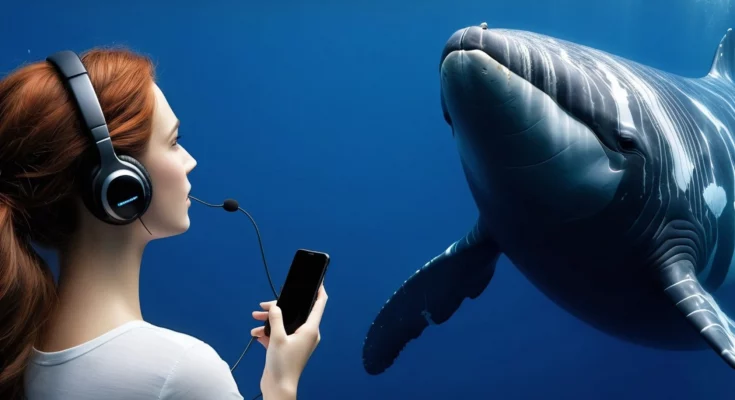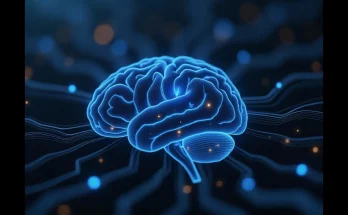In an exciting development in the field of artificial intelligence (AI), researchers are currently racing to create the first AI capable of translating animal communication into human language. This groundbreaking initiative promises to not only transform our interaction with animals but also to enhance wildlife conservation efforts. As a result, various teams are competing for substantial grants like the Coller-Dolittle Prize, which offers up to $10 million in rewards for significant advancements in this area.
The Coller-Dolittle Prize: A Game Changer for Animal Communication Research
The Coller-Dolittle Prize has sparked a frenzy among scientists and researchers eager to make strides in establishing a genuine communication bridge between humans and animals. The prize consists of a $500,000 reward or $10 million in equity investments for the most promising research teams. This has led to the collaboration of various research projects and the pooling of resources from academia and tech industries alike.
Leading Projects in Animal-to-Human Translation
Currently, two leading projects are at the forefront of this remarkable race: Project Ceti and the Earth Species Project. Each is focusing on different aspects of animal communication, utilizing advanced AI and machine learning technologies.
Project Ceti: Decoding Whale Communication
Project Ceti, short for the Cetacean Translation Initiative, is focused on translating the intricate communication systems used by whales. Researchers in this project are primarily studying the click sounds made by humpback and sperm whales. Their ambitious goal is to decipher the meaning behind these complex vocalizations.
- Project Ceti has been ongoing for over a decade.
- Researchers have collected approximately 8,000 vocalization samples, which poses challenges in AI model development due to the limited data.
- Despite these challenges, the team reports that they have made some progress toward understanding whale communication.
Nevertheless, the lack of extensive vocalization data remains a critical obstacle in the quest to create a working AI model.
As explained by a Project Ceti researcher from Dominica, “We are stepping into uncharted waters, and while we have made strides, there is still a long journey ahead.”
The Earth Species Project: A Broader Scope of Animal Communication
On the other hand, the Earth Species Project aims to decode communications across various animal species, including zebras, crows, and whales. Recently, this project secured $17 million in funding, signaling strong support for its groundbreaking research.
- Earth Species Project employs machine learning algorithms to identify patterns in animal vocalizations.
- The goal is to develop basic dictionaries for different species’ languages.
- This revolutionary approach aims to facilitate more meaningful interactions between wildlife and humans.
As Katie Zacarian, CEO of the Earth Species Project, emphasizes, “Our objective extends beyond mere translation; we aim for a deeper understanding of animal experiences.”
The Road Ahead: Anticipating Progress in Animal Communication
Even though a fully functional animal translation device may still be several years down the line, researchers are optimistic. Advances in AI and data analytics are steadily providing insights into patterns of animal communication. The quest to understand our furry companions better is one fueled by passion, scientific curiosity, and the promise of potential innovations.
Dr. Kevin Coffey, the neuroscientist behind the AI translation model DeepSqueak, insists that “AI and deep-learning tools are not magic,” but ongoing research ventures like Project Ceti and the Earth Species Project are making it clear that the dream of conversing with animals is becoming more realistic.
Ethical Considerations and Implications for Wildlife Conservation
The potential success of these projects holds profound implications for wildlife conservation. Understanding animal communication could lead to better protective measures informed by their needs and behaviors. Researchers hope that by translating animal languages, they can:
- Enhance conservation efforts by implementing species-specific intervention strategies.
- Improve human-animal relationships and foster a deeper empathy for wildlife protection.
This pioneering work is not just about curiosity — it’s about forming a profound connection with the living world that surrounds us. Bridging the gap between humans and other species could yield invaluable lessons in empathy and coexistence.
Conclusion: The Future of Animal Communication Science
The race to develop AI capable of translating animal language has ignited a wave of excitement and possibilities in both technology and environmental conservation. With promising projects like Project Ceti and the Earth Species Project striving toward this ambitious goal, the future looks bright for the science of animal communication. As researchers continue to unlock the secrets of animal language, we can only hope that the dream of talking with our pets and understanding wildlife becomes a reality.
As new discoveries unfold, one thing is certain: the ambition of communication with our animal counterparts may not be as far-fetched as it once seemed. The promise of a heart-to-heart understanding of our shared world is just over the horizon.



